Whether you are a classroom teacher, a homeschooler or a parent with kids at home, you can spark your child’s interest and inspire them to investigate the world around them through simple changes to your environment. As part of our series on designing intentional learning spaces, I will share how I have designed our space for learning in our home without a dedicated schoolroom. I will highlight ways to encourage intentional learning, creativity and independence through a few basic design qualities I have learned through my years as an educator. So far we have covered spaces for reading and writing. Today’s post will highlight how we encourage creativity in our home.
{THIS POST MAY CONTAIN AFFILIATE LINKS TO MATERIALS I RECOMMEND. ANYTHING YOU PURCHASE THROUGH THESE LINKS HELPS SUPPORT LEMON LIME ADVENTURES. THANK YOU IN ADVANCE FOR CHOOSING TO SUPPORT US.}
It is my goal to share what I have learned in my years as an educator, both in the classroom and at home. I want to be transparent. I am not a designer. I have not had any formal training is design. While my philosophy matches that of Reggio Emilia and Montessori, I have not been trained in either teaching method. I believe in the environment as a third teacher and that children are encouraged to spark their curiosity and intellect when they are presented with well designed spaces.
THOUGHTS ABOUT DESIGNING A CREATIVE SPACE
Creativity is the core to all learning. It allows us to take what is learned and turn it into something new, something wonderful, and something of value. I strongly believe in creating a space where children are inspired to create and invent as part of their daily life. I believe it gives children a way to express themself without words in a way they might otherwise not be able to do.
In our home, you will find creation stations everywhere… in the kitchen, in the living room, in their bedrooms, and even on the back porch. When I was in the classroom, I followed the same principles and strategically designed spaces for both open ended and purposeful creativity. When designing a creative space, you want to create a space where children will feel welcome and comfortable using the materials and exploring the space on their own. According to the Reggio philosophy, children have 100 languages in which they tell their story… they draw, they dance, they move, they sculpt… and so one, and so on. This is one of the reasons that creating an intentional space for creativity is so important and vital to the development of young children.
DESIGNING YOUR CREATIVE SPACE FOR INTENTIONAL LEARNING
During each part of this series, I plan to share 4 simple steps to developing an intentional learning space. To learn more about general practices and my philosophy of education, you can read more on the landing page.
SIMPLIFY YOUR CREATIVE SPACE
Create, construct, invent, mold, shape and build… all these words equal creativity. When you think of a creative space, what comes to mind? A table with paints and paper? An area devoted to free form drawing? Something else? For us, creativity is encouraged throughout our environment. Children can see the value through the well placed invitation to build with styrofoam, the portable comic book kits that were strategically designed for each child in mind, or the creation center in the kitchen. Similar to the other design ideas I have proposed, I suggest starting your creative space by thinking about your space. How do you want children to move through the space and what your intentions are.
A creative space could have the purpose of documenting your child’s learning through the art forms, or you might have a specific task that needs to be completed. Whatever the case may be, designing your space for creativity with your purpose in mind will guide you and the choices you make for that space.
As always, I suggest starting with a blank slate. Empty the area and start to build your space. For our creative space, we are limited and do not have a dedicated room, therefore we needed to find a way to have materials present and accessible but minimal in space. We found our perfect space in our kitchen by clearing off the wooden bar stand, placing it in the corner and filling it with our materials. Whenever we have a specific project we are all working on, I place the materials on the kitchen table while the children are busy doing something else, so they walk in to an inviting and inspiring creative space.
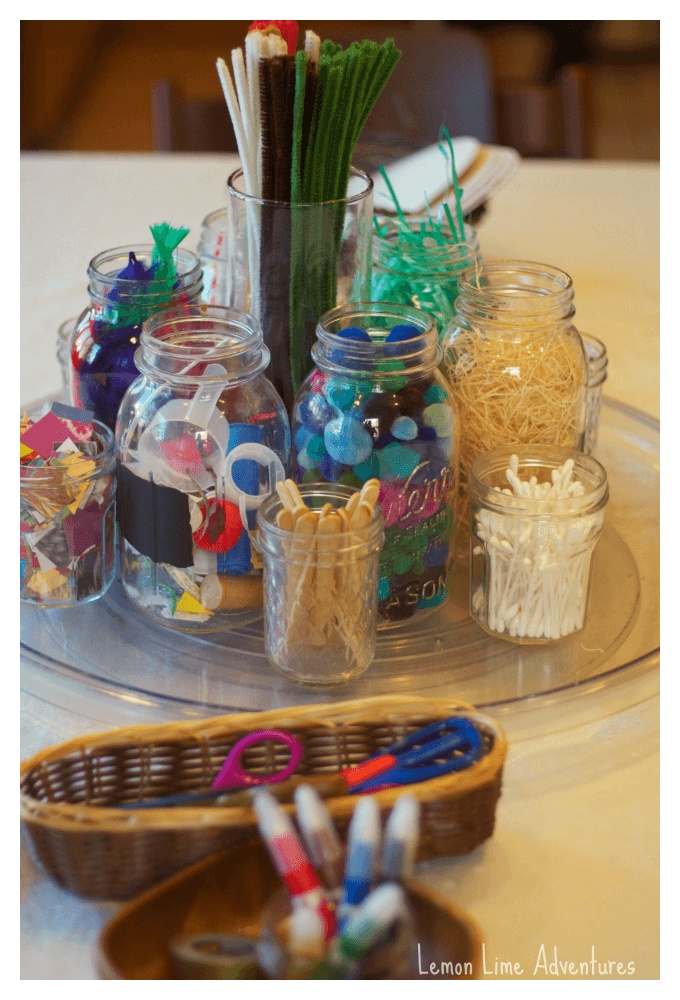
Materials Needed to Simplify Your Creative Space:
Lazy Susan
Baskets for Materials
Cups/ Jars for Small Materials
Covering for the Surface/Table
Once you have mapped out your space and you are familiar with your purpose, you are ready to fill your area with materials. Remember to keep things simple and decluttered, only presenting the materials that should be used at this time. Too many options and ideas can clutter the space and the ideas your children have.
CURATE MATERIALS FOR YOUR CREATIVE SPACES
Materials for the perfect creative spaces can vary greatly on the need, the purpose, and the interests. I suggest keeping materials in the area for only a short time and then rotating your materials out for a new purpose and revitalized creative space. Really take some time to think about how and why you want the children to use the space. What materials would you like them to explore at this moment and which ones should be stored and kept out of the way?
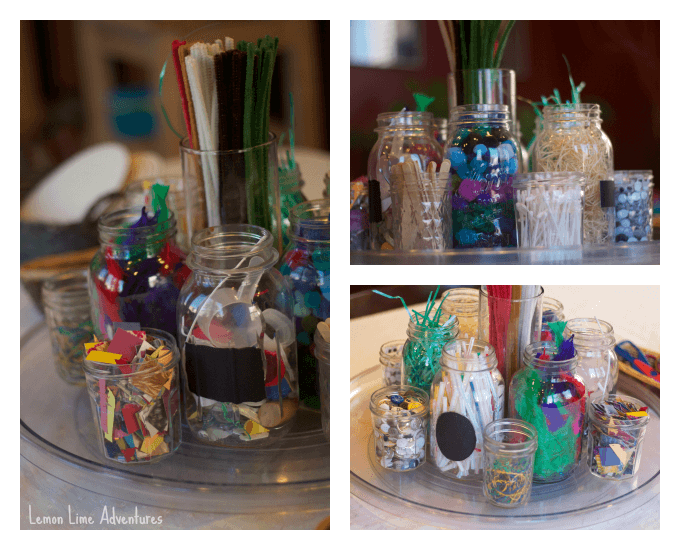
Things to consider when choosing your materials:
- How old are the children using this area?
- How will the materials be used?
- What tools do they know how to use or need assistance with?
- What are their current interests and desires?
- How will you handle the mess, the clean up and the use of the materials?
Materials for Your Creative Spaces:
The possibilities are truly endless. I will list some of our all-time favorites, but you should attempt to follow your child’s lead and add what interests and inspires them to create.
- Recycled Objects (lids, straws, loose parts, cardboard tubes, styrofoam trays, etc)
- Small Crafty Objects (googly eyes, pom poms, pipe cleaners, rubber bands, etc)
- Markers, Pens, Colored Pencils
- Paints
- Brushes
- Alternatives to Brushes
- Watercolors
- Pastels
- Chalk
INVITE LEARNERS TO CREATE
Loading a creative area or the environment with tools for creating doesn’t necessarily encourage creativity. In fact, more than any other area I have shared, having too many materials in this area could actually hinder the growth and creativity you see within your children. Strategically setting up a creative table invitation will entice children to manipulate the materials and try new things. You might be amazed at how willing a child is to create when it is laid out before them and left up to their own curiosities.
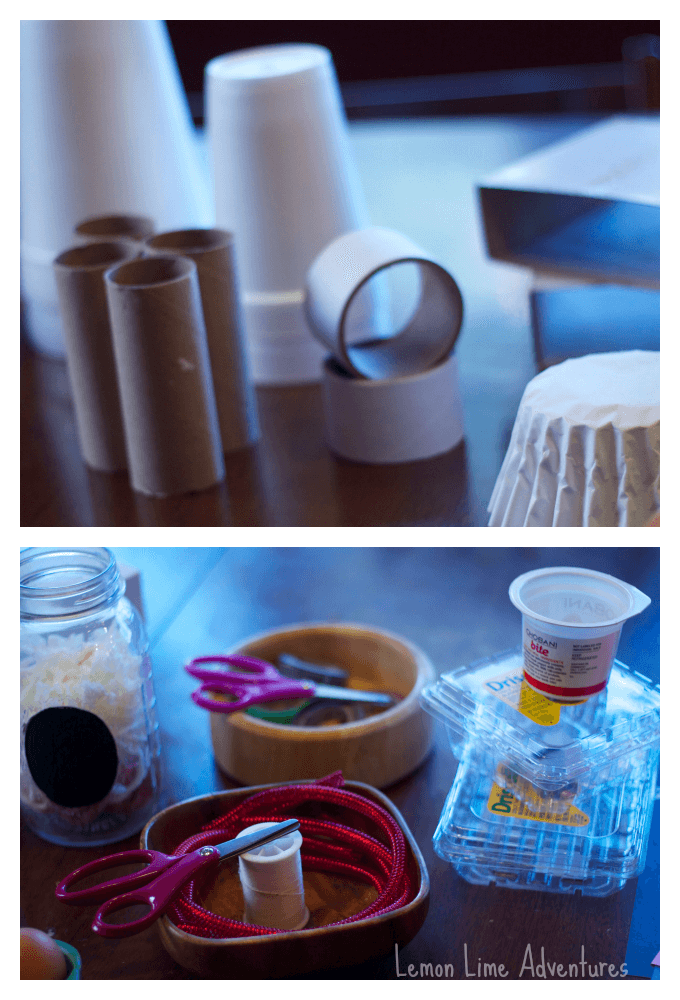
Materials to Make Your Creative Space Inviting:
- Images of subjects your children are interested in
- Framed artwork created by children
- Famous artists’ work to inspire
- A variety of materials to explore
- Include items from nature
Tips to Making Learning Inviting:
- Less is more
- Placement is key… arrange the materials in a beautiful setting and children will be drawn to them
- Have everything prepared ahead of time so children walk into an inviting space
- Keep the space free of clutter
FACILITATE A LOVE OF CREATING
As I have mentioned before, having amazing materials and creating an environment that encourages …..You could find yourself frustrated and feeling like all of it was not worth your time. It is incredibly important to scaffold the area so that all of the children can use the area, however it is okay to strategically model how to use some or all of the materials.
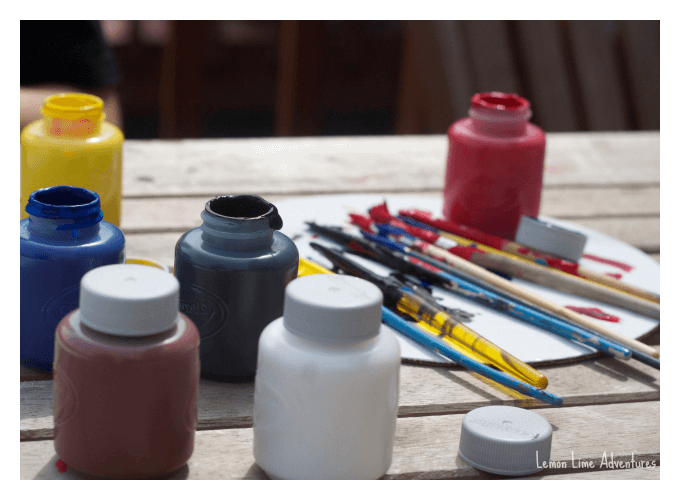
Simple Ideas for Facilitating Creativity:
- Allow children time to explore each material independently, without a purpose
- Start with only one new material at a time
- Model ways to use the materials
- Create joint projects
- Research and study famous works of art and try to recreate them together
INTENTIONAL LEARNING SPACES RESOURCES
As I mentioned before, this post is only a tiny slice of a larger series on learning spaces. I hope you will stick around and check out the series. Each day, I will share a different area of focus from reading to sensory.
How do you plan for intentional learning in your writing space? I would love to hear and see pictures! Please come connect with me on Facebook, Twitter, Google+, Pinterest, Instagram or subscribe by email so you don’t miss what comes next in the Intentional Design Series!
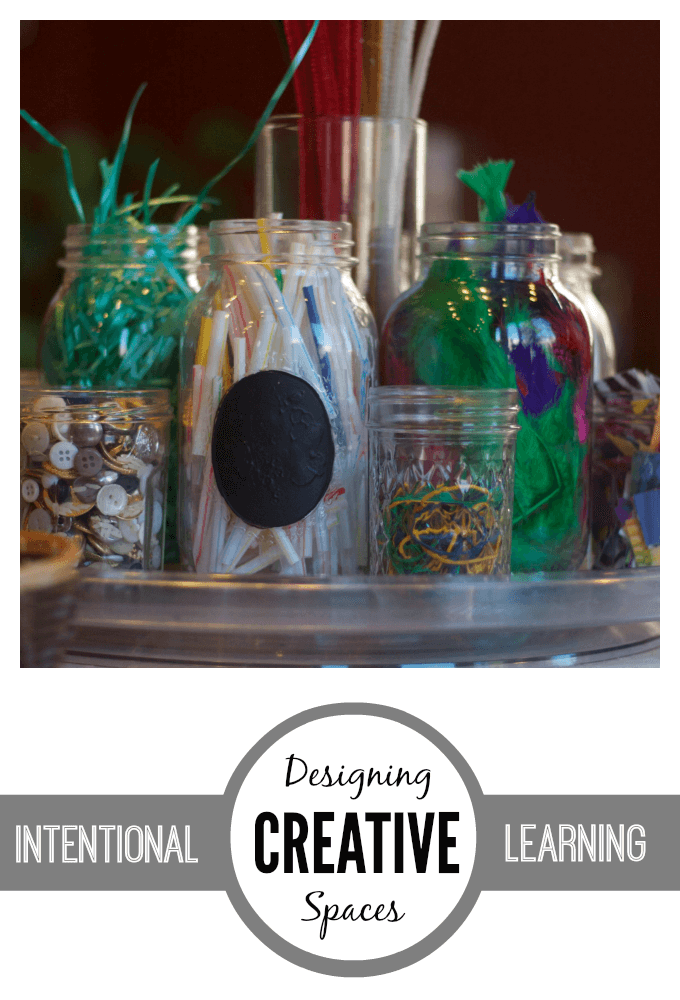


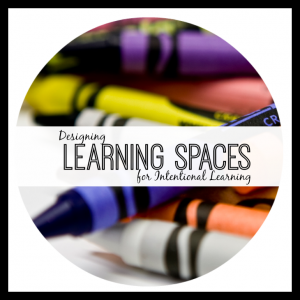






Pingback: Take Back Control of your Arts and Crafts Supplies - Crafty Kids at Home